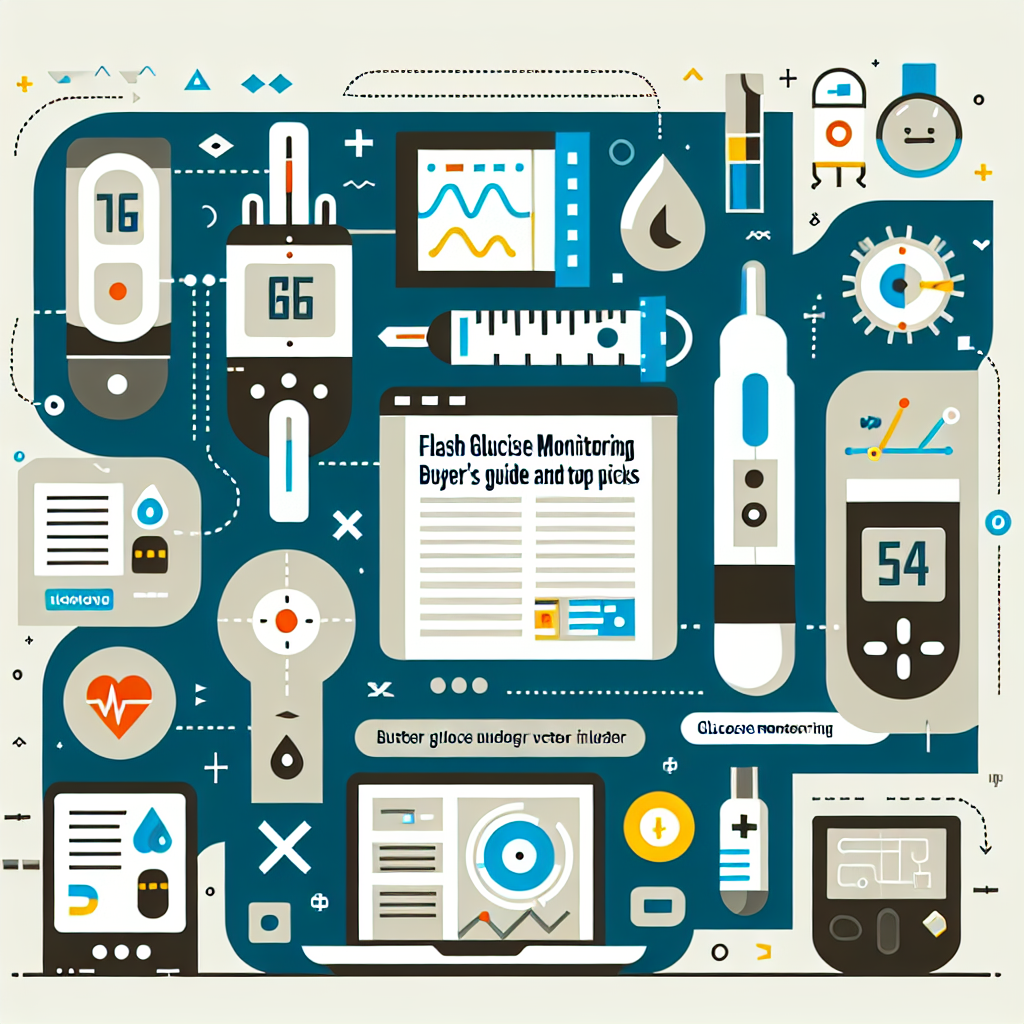Flash glucose monitoring has changed how many people manage diabetes, offering quick, painless checks and insights without routine fingersticks. If you’re comparing options, this buyer’s guide explains how the technology works, what to look for, and the top considerations for choosing a device that fits your lifestyle. We’ll cover sensor types, accuracy, costs, and real-world pros and cons so you can shop confidently.
Flash glucose monitoring systems: how they work
Flash glucose monitoring systems use a small sensor worn on the skin to sample interstitial fluid and deliver glucose readings when you scan the sensor with a reader or smartphone. Unlike traditional meters, flash blood glucose monitoring typically requires no routine finger-prick for everyday checks, though periodic calibration or confirmatory testing may still be advised depending on the device and your care plan. Scanning provides immediate readings, historical trends, and alerts in many models.
Key benefits and trade-offs
Benefits include reduced pain and burden from fewer fingersticks, easier trend spotting, and improved ability to detect nocturnal or asymptomatic highs and lows. Many users report better day-to-day decision-making with continuous visibility into glucose patterns. Trade-offs to consider are sensor adhesion, occasional signal dropouts, and differences in agreement with capillary blood glucose during rapid changes in level (for example, after a meal or exercise).
What to look for when buying
- Accuracy and clinical validation — look for studies or regulatory approval that demonstrate reliable performance across glucose ranges.
- Sensor life and cost — compare how many days a sensor lasts and the per-sensor price to estimate ongoing expenses.
- Connectivity and apps — consider whether the reader or smartphone app fits your needs for data sharing, alarms, and trend displays.
- Adhesion and comfort — sensor size, profile, and adhesive quality affect comfort and the likelihood of premature detachment.
- Support and warranty — manufacturer support, return policies, and customer reviews can signal long-term satisfaction.
Top practical tips for real-world use
Place sensors on recommended body sites, and allow proper skin prep to reduce lift. If you exercise or swim, verify the device’s water resistance and adhesion. Note that readings reflect interstitial fluid and can lag behind capillary blood glucose during rapid changes; many people keep a small meter for confirmation before insulin dosing in such situations. For background on related technologies, reputable overviews like those comparing continuous systems provide helpful context: Continuous glucose monitoring (Wikipedia).
Comparing models and costs
Models differ in how data is accessed (scan vs. automatic transmission), sensor duration (from about 7 to 14 days or longer), and whether alarms are provided for hypo- and hyperglycemia. Insurance coverage varies widely; check reimbursement policies for sensors and readers in your region and compare manufacturer discount programs. To learn more about broader diabetes management strategies and therapies, see our detailed resource in the WellnessHQ diabetes guide: comprehensive diabetes treatment guide.
Who benefits most?
People with type 1 diabetes, insulin-treated type 2 diabetes, and those who experience frequent hypoglycemia or wide glucose swings often gain the most from flash systems. However, anyone wanting better day-to-day understanding of glucose trends—such as athletes adjusting training and nutrition—may find value. Discuss device choice with your clinician to align on goals and safety, particularly if you use insulin.
Limitations and safety considerations
Although many users avoid routine finger-pricks, some scenarios still require capillary testing: when symptoms don’t match sensor readings, when readings indicate hypoglycemia, or for dosing decisions if the sensor is new or behaving unexpectedly. Sensors can also be affected by compression (when lying on a sensor), environmental factors, or interfering substances. Read the device warnings and ask your care team about best practices for verification.
- Takeaways:
- Flash glucose monitoring offers quick scans, fewer fingersticks, and better trend visibility for many users.
- Compare sensor accuracy, wear time, connectivity, and ongoing costs before buying.
- Keep a traditional meter for confirmation in critical situations or rapid glucose changes.
- Discuss device choice and data interpretation with your healthcare provider to ensure safe insulin decisions.
Q: Is flash glucose monitoring the same as continuous glucose monitoring?
A: They’re related but not identical. Flash systems usually require an active scan to read glucose, while many continuous glucose monitoring (CGM) systems transmit readings continuously and can provide automatic alarms. Both use subcutaneous sensors that sample interstitial fluid rather than capillary blood.
Q: Will insurance cover sensors and readers?
A: Coverage varies by country, insurer, and individual plan. Some programs cover sensors for people who meet clinical criteria (for example, insulin use or frequent hypoglycemia). Check your plan details and manufacturer support programs for cost assistance.
Q: Do I still need fingersticks with a flash system?
A: Often you can reduce finger-pricks, but you may still need fingerstick testing for calibration in some systems, to confirm unexpected symptoms, or before making insulin dosing decisions during rapid glucose changes. Follow your device instructions and clinician guidance.






